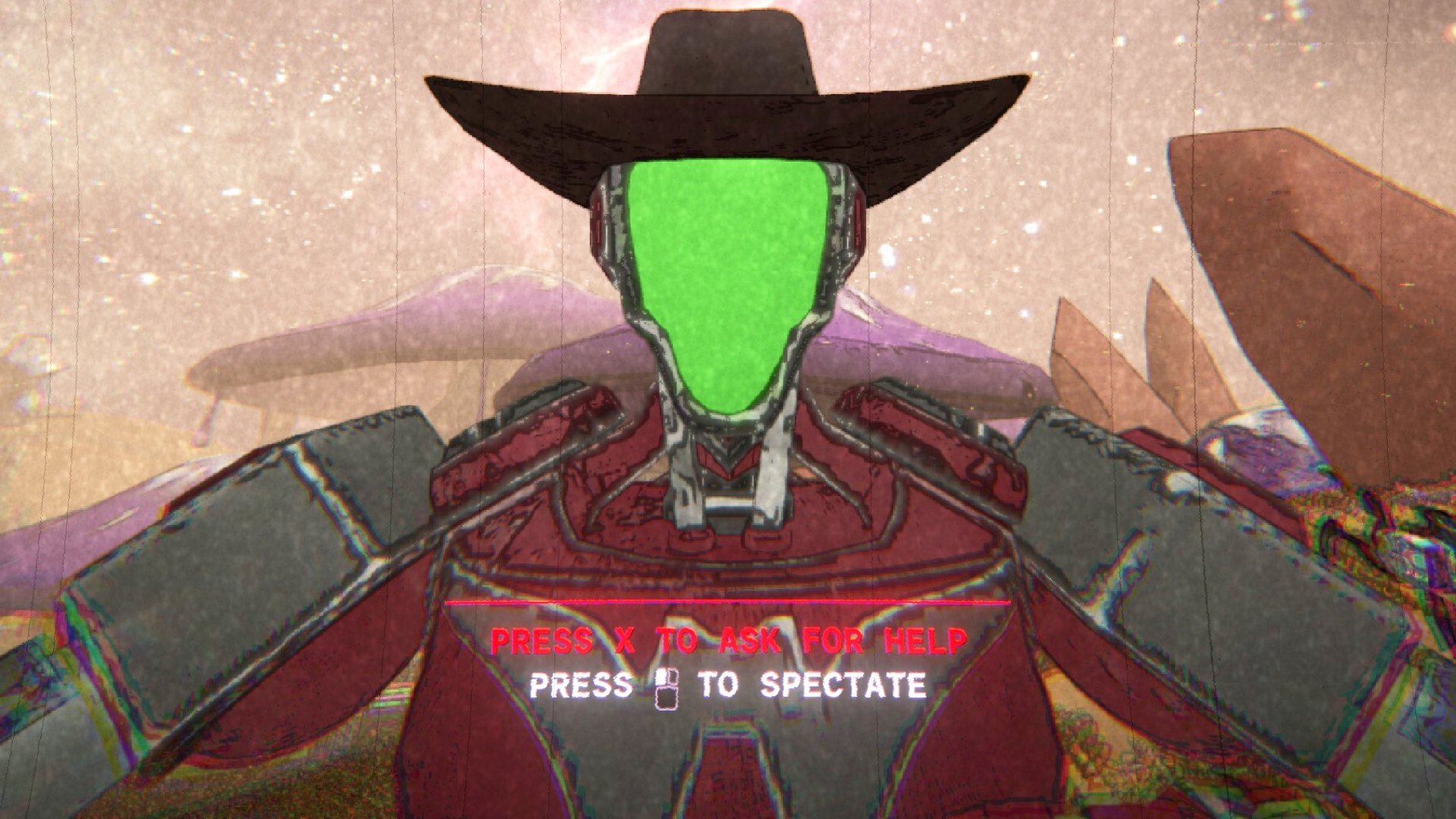Making Galak-Z: a day in the life of an indie studio in Kyoto, Japan
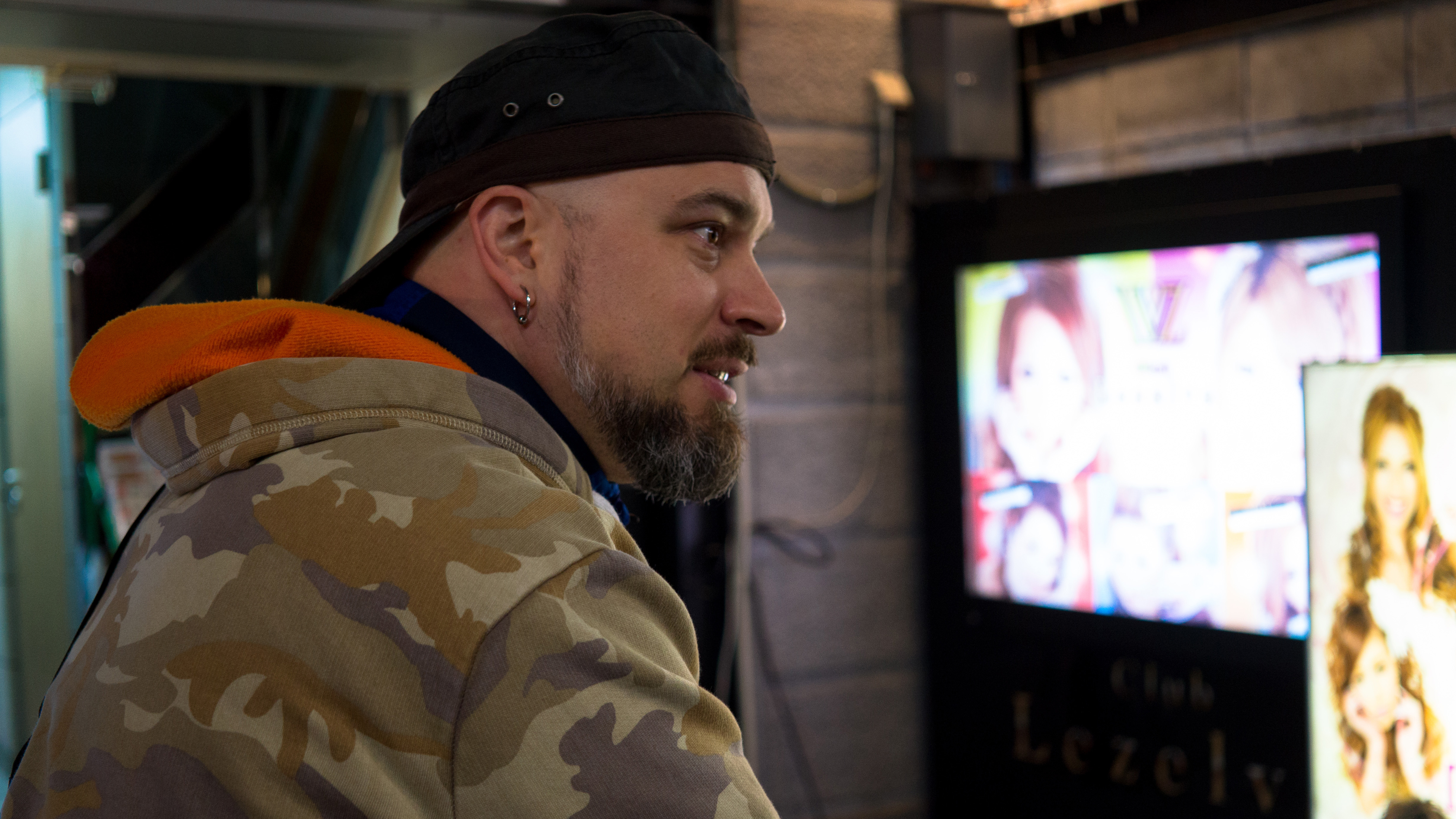
I've known Jake Kazdal for about 15 seconds before he's talking to me about Shigeru Miyamoto. We meet outside the International Manga Museum in Kyoto on a dazzling afternoon, bright with an edge of wind. It's the beginning of November, and Kyoto is announcing the arrival of autumn. Kazdal is talking about video games, in a roundabout way. He usually is, whether we're eating ramen at Ippudo around the corner, or sitting in his office playing Galak-Z, the space shooter his studio 17-Bit is hard at work on, or winding through the narrow alleyways where Kyoto's nightlife comes alive at dusk. He loves games in a way that I first found inspiring and later envied.
I really, really like video games. But not as much as Jake Kazdal.
He leads me into the Manga Museum's small cafe, where legendary artists have visited and sketched their creations on the wall. Kazdal points out Miyamoto's charming Mario pen drawing in a far corner. I always knew Miyamoto was the man behind Mario, of course, but I didn't know he drew the iconic plumber, too.
Nintendo's headquarters are in Kyoto, a 20 minute subway ride from Kazdal's office near the Manga Museum. Later I ask if he knows where Miyamoto eats lunch. "I do not. I haven't started stalking him yet, but it's all part of the plan as soon as I get some free time," he jokes.
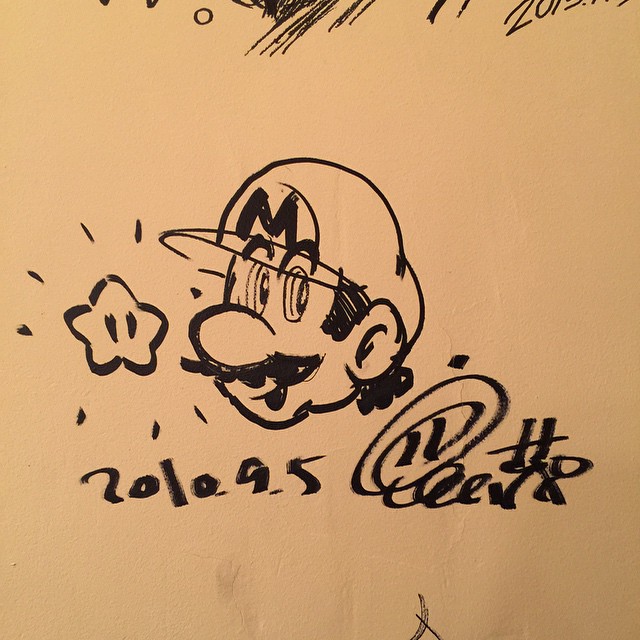
Kazdal hasn't even really had time to unpack yet. 17-Bit is in the last few months of development on Galak-Z, which seems like an odd time to move a studio halfway across the world, from Seattle to Japan. I met up with Kazdal because I was interested in playing Galak-Z, seeing how it's changed since the last build we played at PAX, and what the move to Japan meant for the game's final few months of development.
What I got was a rare unfiltered look into the development process of an indie game and what makes its creator tick. Galak-Z was rough and unfinished, with bugs here and undubbed lines of dialogue there. It was simply the most recent build the team had been working on, with broken scripted moments and events that may well have been working a few days before. And it was, despite all of that, a hell of a lot of fun to play.
I sit on a tatami mat in 17-Bit's new office a dozen floors above downtown Kyoto and flit through space in Galak-Z's nimble fighter, while Kazdal takes notes on a yellow legal pad. He asks questions while I play, jotting down when the AI didn't behave to his liking or bits of dialogue didn't properly trigger. As I play, we talked about his take on game design, Galak-Z's inspiration, and the risks of moving 5000 miles a few months before shipping a game.
Keep up to date with the most important stories and the best deals, as picked by the PC Gamer team.
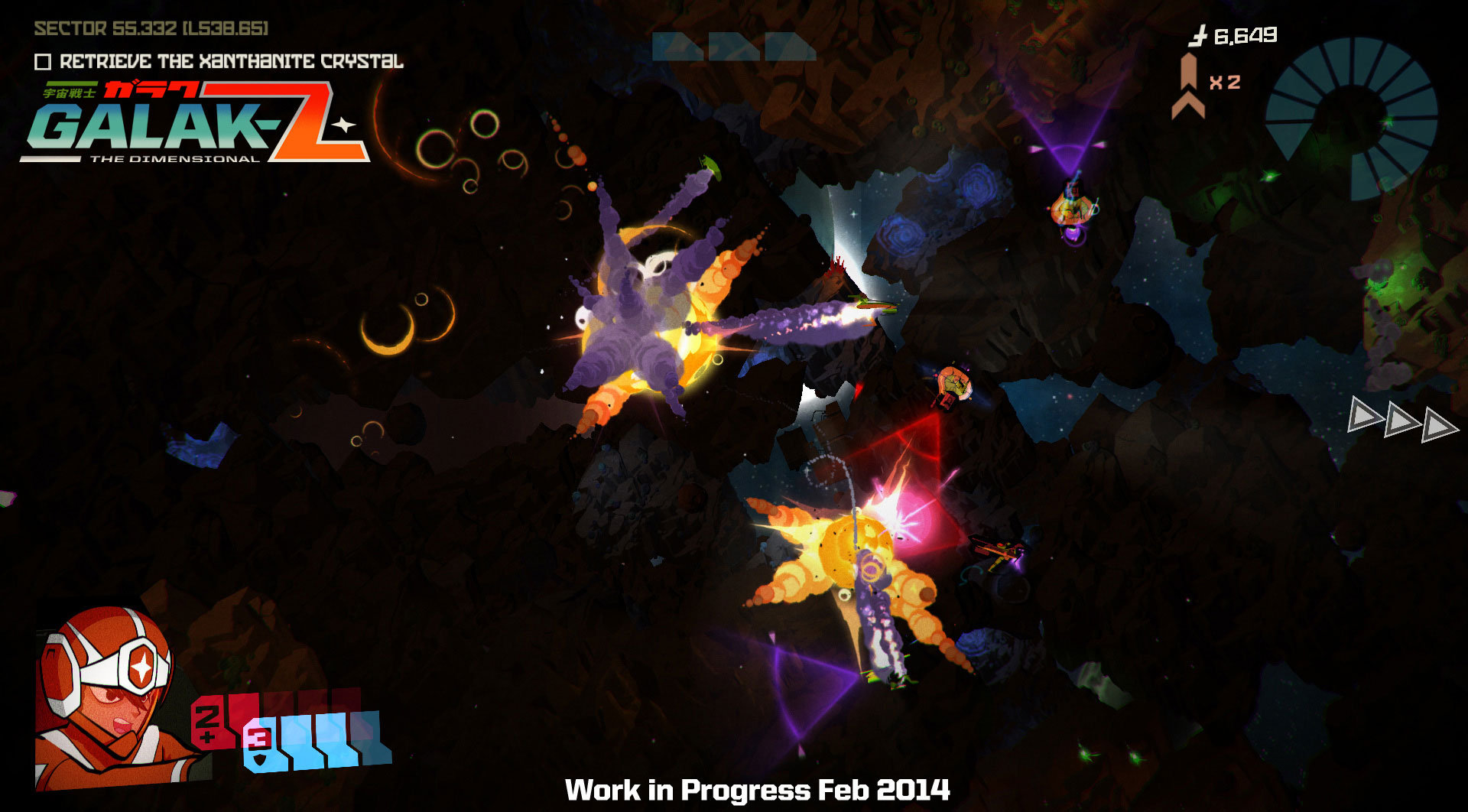
Galak-Z: roguelike meets Halo meets SHMUP
Galak-Z is a daring game, though it seems like a cocktail of surefire gaming favorites. It looks like an anime-inspired twin-stick space shooter roguelike with gorgeous Macross explosions and a fighter straight out of Battlestar Galactica. That hits about seven gamer demographics at once. And it is actually all of those things—except a twin stick shooter. Galak-Z's craft fires in the direction it's pointing, and it controls with a weighty sense of propulsion, like the sleek hovercraft of the WipEout series. Mastering the fighter's zero-g acrobatics to shoot enemies while weave through clouds of bullets takes real skill.
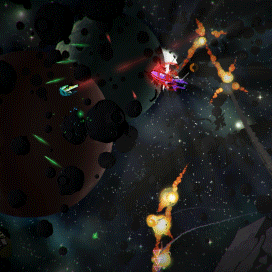
Click the expand button to play animated gifs
Your shields drop fast. If you're not willing to run from fights, you will die. The ship has both forward and reverse thrusters that can whip it around in any direction, but you still have to account for momentum. Holding down a button to lock-on a flurry of expendable missiles can instantly devastate a tough enemy, but staying alive in the middle of a fight long enough to get that lock is playing a dangerous game. Galak-Z immediately makes you realize how easy twin-stick shooters are, by comparison. Enemies aren't there to be killed by the thousands for a high score.
"I'm not a big twin-stick shooter fan, so that was never really on the board," Kazdal says as I try to get the hang of the ship's controls. "If you're shooting a million enemies, it's a different kind of rush. But I like more thoughtful combat. You have a lot of responsibility in this game. The physics, just maneuvering in the environment is one thing, and lining up your shots, it's not easy. It's difficult to line up your shots. It's like this combat simulator in this zero-g space based on real physics."
AI plays a big part in Galak-Z's combat, which takes as much inspiration from Halo as it does R-Type or Gradius. Rather than a constant stream of enemies, Galak-Z's three AI factions (Imperials, pirates, space bugs) show up in small clusters that you can barrel into for short, tense firefights. They're tough, even on the lower difficulty levels. Galak-Z's difficulty ramps up through seasons structured like an anime TV show, with five episodes comprising each season. I made it about ten minutes through the first episode before dying to an enemy that I most definitely should have run away from to let my shields recharge.
"I hate that you can die in our fucking tutorial," Kazdal says as my ship explodes into space dust. "I've been fighting with the system designer about it. I think I'm going to take it out. The goal is to get you into the game as soon as possible, not to take you out."
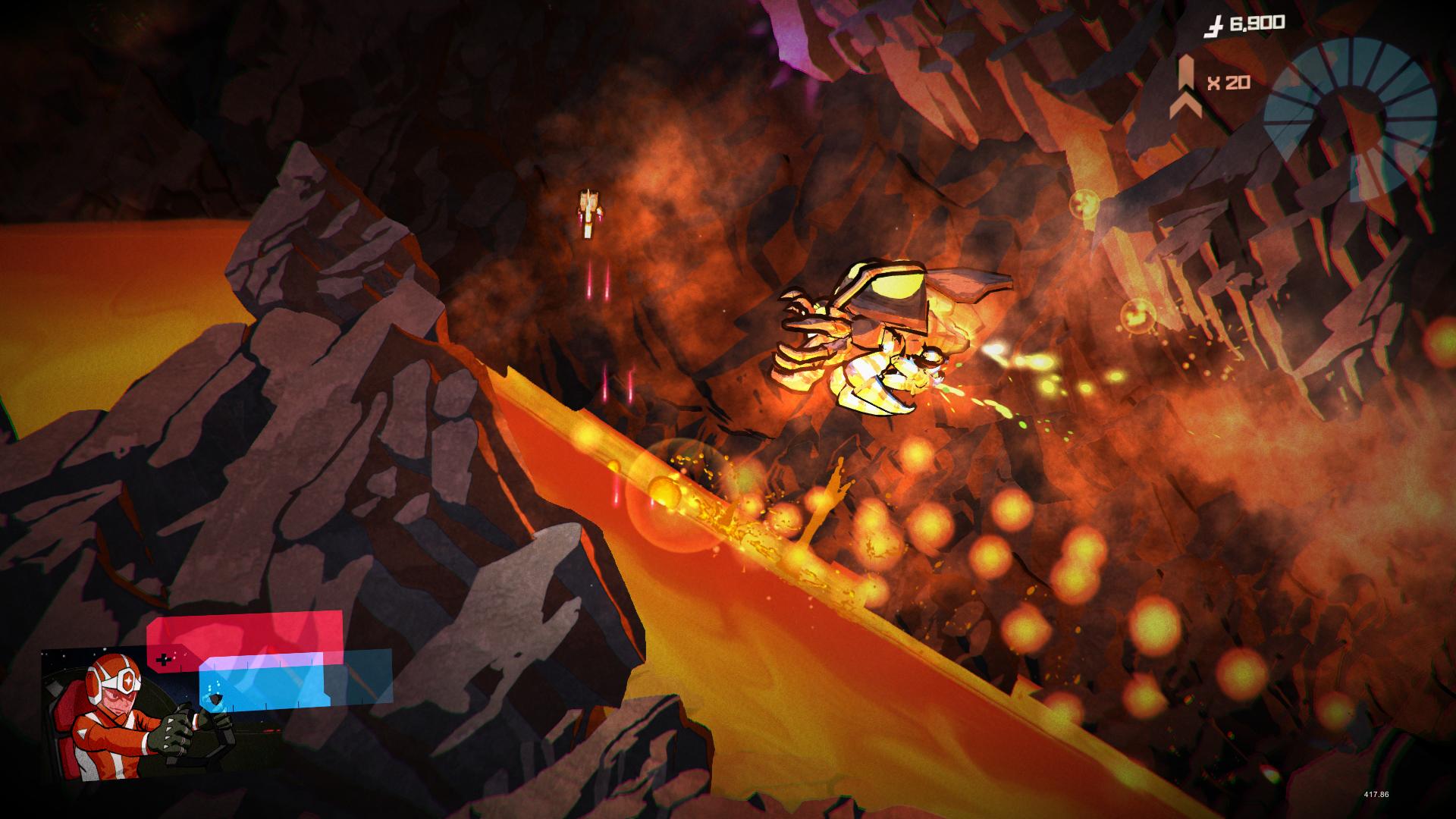
I skip past the tutorial when I jump back into the first episode. Bits of un-voiced dialogue try to introduce me to my next mission. Like most contemporary roguelikes, Galak-Z uses procedural generation to vary its episodes each time you play them. An episode's objective won't change, but the environments and layouts of missions will.
Galak-Z is the first roguelike I've played that really and truly thrives on its combat. In Spelunky, Binding of Isaac, even Nuclear Throne, I feel like the goal is to survive, to progress, to make it as far as you can in a single run. That's what makes a roguelike a roguelike. Galak-Z is an action game first and foremost; the roguelike structure simply ensures that its missions will play out differently, one run to the next.
Kazdal takes notes as I play. The game's weapons dealer, Crash, who appears in random locations like Spelunky's shopkeeper, won't talk to me when I fly near him. Bug. He writes it down. An objective doesn't trigger when I finish the mission. He writes it down. Health packs are supposed to show up in the shop to offer mid-mission ship repairs, but they aren't rendering. Bug. Pad.
"This is game design," he says. "Why did this break now? So many things are so subtle." Kazdal spends as much time as he can just playing the game over and over again, partially looking for bugs and potential issues, but mostly scrutinizing every moment of a combat encounter. That's all done on feel. "You play a bunch and you play a bunch and you feel it out. I just get this really strong gut feeling, like this is moving in the right direction, but this guy is too hard, this is too unforgiving, this doesn't feel good. A game should feel good, you know? That's the bottom line."
Galak-Z obviously needs its last bits and pieces to be sewn together, and then it needs polish. But it's fun, even when it's not quite working right, even without most of its weapon upgrades at my fingertips and sound cues missing. As we talk about the game, I think about how many tiny details can dramatically affect the playability of a challenging game like this.
One bit of UI looks just a little too much like an arrow indicating the direction of an objective, but it's not. Kazdal is still thinking about and experimenting with how weapon upgrade unlocks will work. A small change there could totally alter the balance of tougher missions.
One of the pirate enemies looks just a bit too much like an Imperial, and I die, confused, when I lead him to a group of pirates and expect them to fight. When you pull this off, it's one of the most satisfying elements of Galak-Z's AI design. The factions will blow each other apart and leave you feeling like you've survived the battle at the end of Serenity.
Kazdal is director, lead artist and designer, but he's not a programmer. Whenever he feels like something's just a little bit off in a Galak-Z playtest, he has to communicate to the members of the team who actually write the code. "I'm like, it's not as fun as it used to be...something's wrong. I'll talk to the programmer who's like 'no no no, everything's fine,' and I'll say 'can you take a closer look?' And they'll be like 'you're right, [this enemy] used to back off at this time, and someone changed their reaction time from 2 seconds to 10 seconds.' Shit just breaks naturally. It's like ghosts in the machine. If you're not paying total attention, a lot of that shit could just go away, stuff we worked really hard on could just evaporate."
On the next page: a 5000 mile move and the nightlife of Kyoto.

Wes has been covering games and hardware for more than 10 years, first at tech sites like The Wirecutter and Tested before joining the PC Gamer team in 2014. Wes plays a little bit of everything, but he'll always jump at the chance to cover emulation and Japanese games.
When he's not obsessively optimizing and re-optimizing a tangle of conveyor belts in Satisfactory (it's really becoming a problem), he's probably playing a 20-year-old Final Fantasy or some opaque ASCII roguelike. With a focus on writing and editing features, he seeks out personal stories and in-depth histories from the corners of PC gaming and its niche communities. 50% pizza by volume (deep dish, to be specific).

